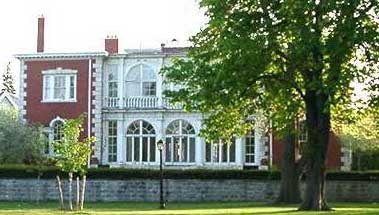Reuse old buildings in Buffalo -- they
can be beautiful and they're cheap!
Buffalo's Historic ("Old")
Buildings: The Bottom Line

"Cities need old buildings so badly it is probably impossible for vigorous streets and districts to grow without them. By old buildings I mean not museum-piece old buildings, not old buildings in an excellent state of rehabilitation - -although these make fine ingredients -- but also a good lot of plain, ordinary, low-value old buildings, including some rundown old buildings....
"Even the enterprises that can support new construction in cities need old construction in their immediate vicinity. Otherwise they are part of a total attraction and total environment that is economically too limited -- and therefore functionally too limited to be lively, interesting and convenient. Flourishing diversity anywhere in a city means the mingling of high-yield, middling-yield, low-yield and no-yield enterprises."
- Jane Jacobs, from The Death and Life of Great American Cities. New York: Random House, 1961.Buffalo can have a bright future -- if it capitalizes on its rich collection of potentially valuable historic buildings which can be an integral part of a renaissance.
Economy
Nationwide, communities are realizing that, economically, it is cheaper to modernize or to renovate an historic building for "adaptive reuse" than to demolish it and start anew."The preservation movement began as an effort to save endangered buildings notable for their architecture. Given their focus, preservationists have tended to create sites frozen in time, museums of the past. Because of its orientation, historic preservation seemed incompatible with economic development, which favors a less sentimental attitude toward place.
"Yet in recent years the movement has expanded to include a variety of sites that embrace the everyday, the vernacular, and offer better opportunities to partner preservation with economic growth. Preservationists, planners, and developers now understand the intrinsic economic value of older structures. The authenticity historic buildings represent is marketable in an environment that all too often features routinized and formulaic development." - Beyond This Old House: Historic Preservation in Community Development
Evidence:
Beauty
Other advantages of either modernizing or adaptively reusing an historic building include craftsmanship, materials, and architectural details that are uneconomical to include in new builds.
Here are a few of the better known examples of adaptive reuse in Buffalo:
- Elk Street Terminal (loft apartments)
- Shea's Movie House (theater)
- Old Post Office (school)
- St. Mary of Sorrows Church (school)
- Greyhound Bus Terminal (theaters)
- All the mansions on "Millionaires' Row" (offices, conference halls, cultural center, schools)
- Sternberg Mansion (hotel)
- Martin House, Barton House, and Graycliff (museums)
- Birge Mansion (offices) - PICTURED ABOVE
- Rand House (school)
- Sidway Building (apartments)
- Plymouth Methodist Church and Christian ScientistChurch (museums)
- Chemical #5, Engine #15 Fire Stations (home, apartment)
- Courier Express Building (offices)
- Cyclorama Building (offices)
- Unitarian Church (library)
- Hamlin House (restaurant)
- YMCA (offices)
- Squier House (offices)
- Larkin LCo Building (offices)
- Webb Building
- Conners House/Gilda's Clubhouse
- Genesee Building (hotel)
Bargains!
Here are a few of the many buildings that are crying out for adaptive reuse:
- Buffalo Central Terminal
- H. H. Richardson Complex (Buffalo Psychiatric Center)
- AM&A's
- Breckenridge Street Church
- Grain elevators